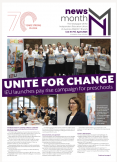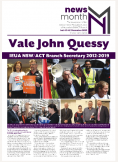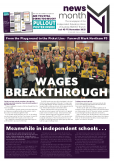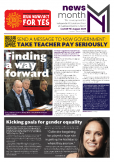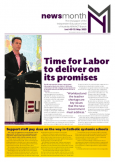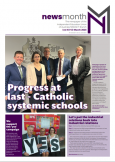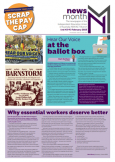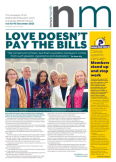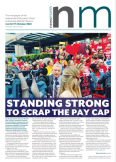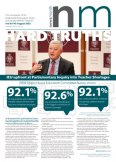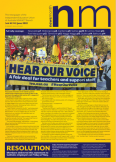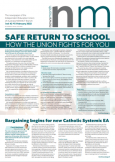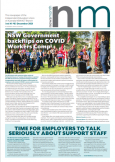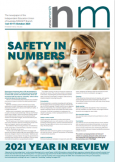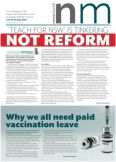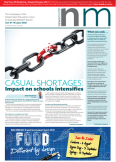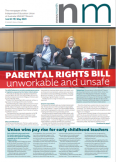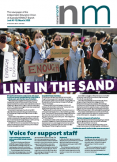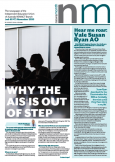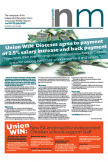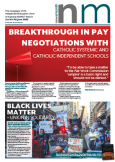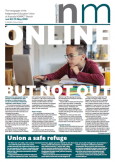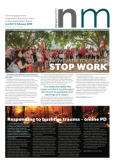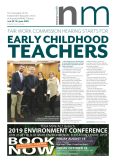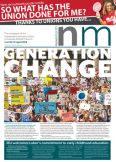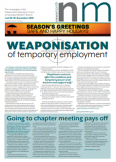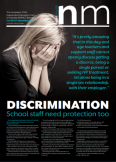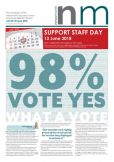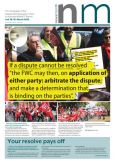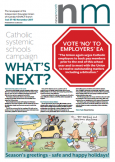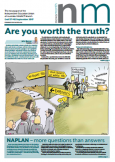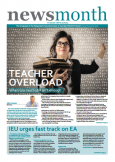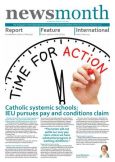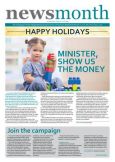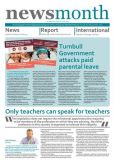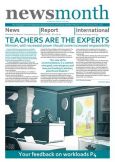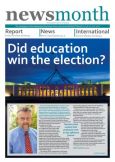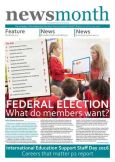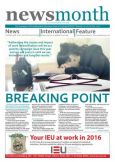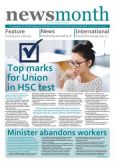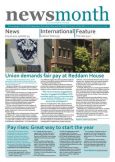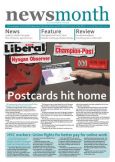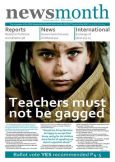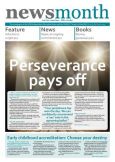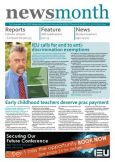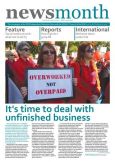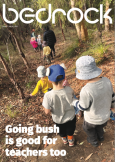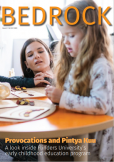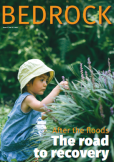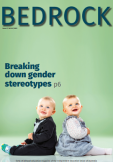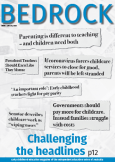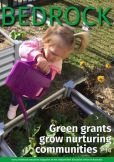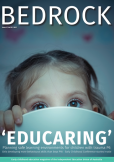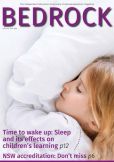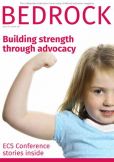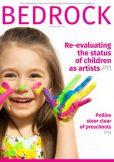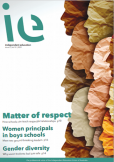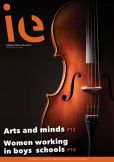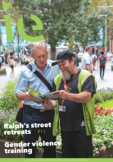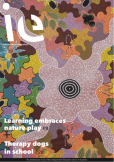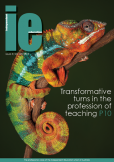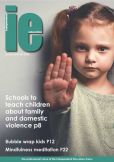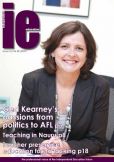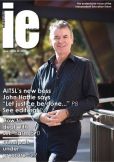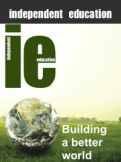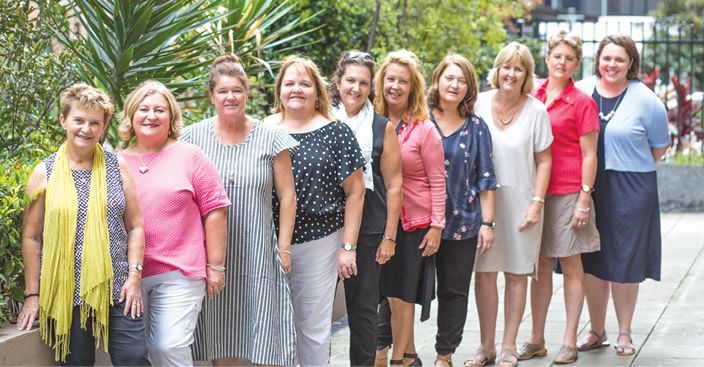
Members of the IEUA NSW/ACT Early Childhood Services Council have written about their concerns on funding issues affecting NSW preschools and long day care centres in 2019.
Phillipa Maher
Impact of funding changes to Disability and Inclusion Program (DIP)
As outlined in the Disability and Inclusion Program (DIP) guidelines, the purpose of this program is to provide funding and support to enable children with a disability and additional needs in community preschools to participate in a quality early childhood program on the same basis as their peers.
So does this newish program achieve that? What has been the impact of funding changes to disability and inclusion on preschools?
There are now five program components: Start Strong equity funding, high learning support needs funding, minor capital works funding, sector capacity building program and early childhood early intervention scholarships. On the up side we now have a ‘one-stop shop’ for funding under Start Strong, but does this make a difference?
From my experience there are still a few glitches, particularly with the Start Strong equity funding.
In many areas of NSW there are a high number of disadvantaged families, so preschools are already eligible for the maximum Start Strong base rate of $6600 per year for each eligible child.
This means that if any of these children are also identified as having a disability or additional need, there is no additional help, as the funding is already being used to support a fee reduction for their family. But the additional funding is vital for preschools to allow children to participate like their typically developing peers.
High learning support needs funding is only provided to children that need one to one support, and although this assists preschools to support children, there is a possibility that the quality of the application, rather than the level of the child’s need, could influence whether or not a child receives adequate funding. Some children need to be supported for every moment that they attend.
The sector capacity building program has been delayed and despite the announcement that it would be fully rolled out by July 2018, it is just starting.
Although the program guidelines state that levels of support will vary depending on a preschool’s circumstances and needs, it is the department which has determined which preschools get the initial capacity building support.
This seems to be based on data from the previous Preschools Disability Support Program (PDSP) where preschools with high numbers of level 1 children were enrolled. These children would all be at primary school now, and preschools have a new cohort.
This scholarship program seeks to address feedback that there may not be enough focus on early childhood development and intervention in special education studies. The Department’s website states that the program is in development and further information will be provided in 2018. In January 2019 we still await any information.
Let’s hope that 2019 sees all components of the Disability and Inclusion Program rolled out, and that the department looks at the flaw with Start Strong equity funding and the fact that it offers no additional support to the children of disadvantaged families who already receive the maximum funding.
Gabrielle Connell
The need for ongoing funding
One of the main issues facing preschools in the last 30 years has been funding certainty. NSW preschools were in a funding freeze from the late 80s until 2011.
After many years of lobbying state and federal governments by teachers, educators, families and peak bodies including the IEUA NSW/ACT Branch, we finally had an injection of funds.
The first new funding was the state Preschool Growth Program – $88 million to be spent on redeveloping and reenergising preschools in NSW making preschool equitable and affordable for every three and four year old child in NSW.
This money came from the Federal Government’s Universal Access Program which aims to ensure every four year old child has 15 hours a week preschool in the year before school delivered by a degree qualified early childhood teacher.
We now have Start Strong in NSW. Start Strong aims to improve affordability of early childhood education and increase the number of children participating for 600 hours in a quality early childhood education program in the year before school.Initially just for children in the year before school, this now includes three year olds in a limited funding model.
The Federal Government has committed $870 million under Universal Access National Partnership arrangements to continue federal support for preschool throughout 2018 and 2019.
But what happens after 2019? Preschools find it difficult to plan into the future and with no assurance of the continuation of Universal Access funding after 2019 this will further exacerbate these issues:
Attracting and retaining qualified staff – most services are not in a position to offer pay parity or guarantee secure employment into the future – especially if funding is not guaranteed.
Employing the most qualified staff will we choose less qualified staff in order to ‘stockpile’ money and keep fees lower in case funding is cut? Will we restructure and employ bare minimum qualified staff in order to reduce costs?
Meeting the needs of our community – how can we formulate enrolment patterns that address the educational and care needs of families if we don’t know we will be funded for these children into the future – particularly three year olds?
Providing professional development for teachers – what budget cuts will be made and in what areas? To remain viable budgets are shaved to save money to remain viable in times of uncertainty.
Closing groups and rooms – if funding isn’t adequate there is a danger of downsizing groups, cutting the number of teachers and reducing educational and care options for children and families.
Closing valuable services – if funding is not ongoing and viability is not guaranteed then there is a danger of services closing – a huge problem for small communities.
Lyn Connors
Sign in, sign out
As a new requirement of the child care subsidy system, all long day care centres are mandated to submit with their session reports/attendances the actual sign in and out times of every child attending a session. Most centres have installed a kiosk which means times are automatically populated each time the parent uses the kiosk and are sent through to the government. Centres that do not have an automated system will need to manually enter actual times for each session a child attends weekly.
Julia Cameron
Indigenous Advancement Strategy Funding
Our preschool received funding from the Federal Government for Indigenous families for 14 years. This funding in the past was known as Supplementary Recurrent Assistance (SRA) and in more recent years Indigenous Advancement Strategy (IAS). Predominantly, SRA funding at this service was used as a fee subsidy for eligible families and for resources linked to Aboriginal culture and learning.
There were changes when IAS was introduced, particularly the encouragement of ‘beyond the preschool gate’ projects.
Our service applied for fee relief for Aboriginal families, a percentage of a third educator’s wage to support developmental delay and to fund a qualified playgroup coordinator for an inclusive playgroup four hours per week during school terms.
We were delighted to have the three projects funded for 2.5 years. Initially the fee relief was capped at 10 families, however that grew to 18.
In 2018 half the preschool enrolments identified as Indigenous and of those, 75% attended 925 hours annually. Almost all of our Aboriginal children had a need for speech therapy or occupational therapy programs.
We were devastated in August 2018 to receive notification the fee subsidy and third educator would no longer be funded, despite the evidence of the positive effect it was having in this community.
We responded with research based evidence to IAS project managers as well as state and federal politicians and ministers. Barnaby Joyce, the local federal member, followed up our concerns with the Minister for Aboriginal Affairs as did the local state member to Sarah Mitchell, Minister for Early Childhood. Apparently, it seems Start Strong is funding both the fee subsidy for Aboriginal families and the employment of staff, so there is no need for the Federal Government to assist.
Of course, since this decision families have reduced their hours. Where does this leave families whose fees have now doubled? How does this address Closing the Gap?
Melinda Gambley
Reinstate full funding for three year olds
The loss of three year old funding in recent years has impacted on small regional preschools like ours. There aren’t enough four year olds in our communities to ensure the viability of our preschools and so we have relied on fee and funding income from three year old enrolments. This year, we see the State Government reinstate three year old funding but at a fraction of the previous rate.
If the State Government is serious about attracting three year olds, preschool must be fully funded or at least funded to the same level as for four year olds.



